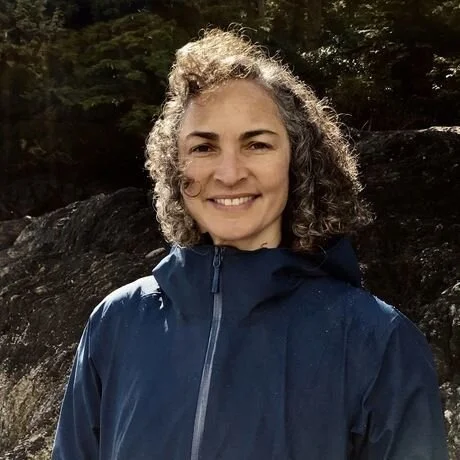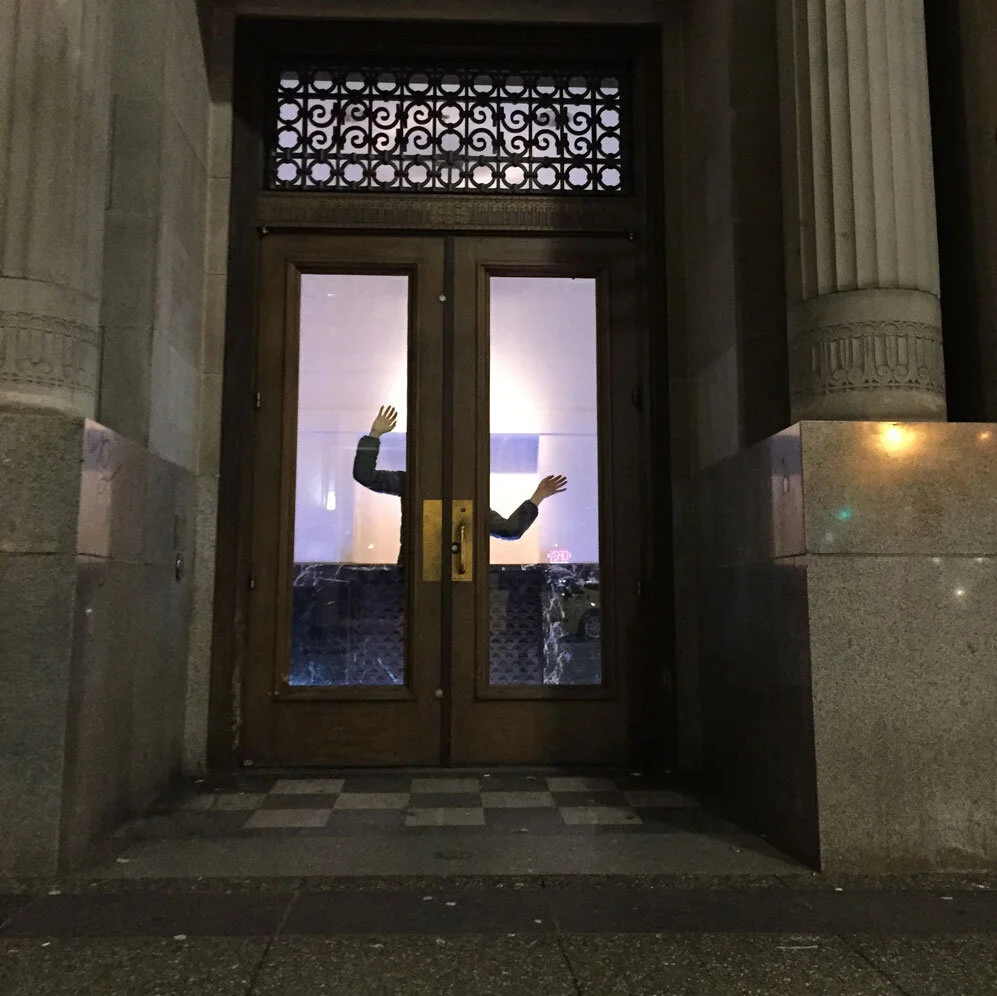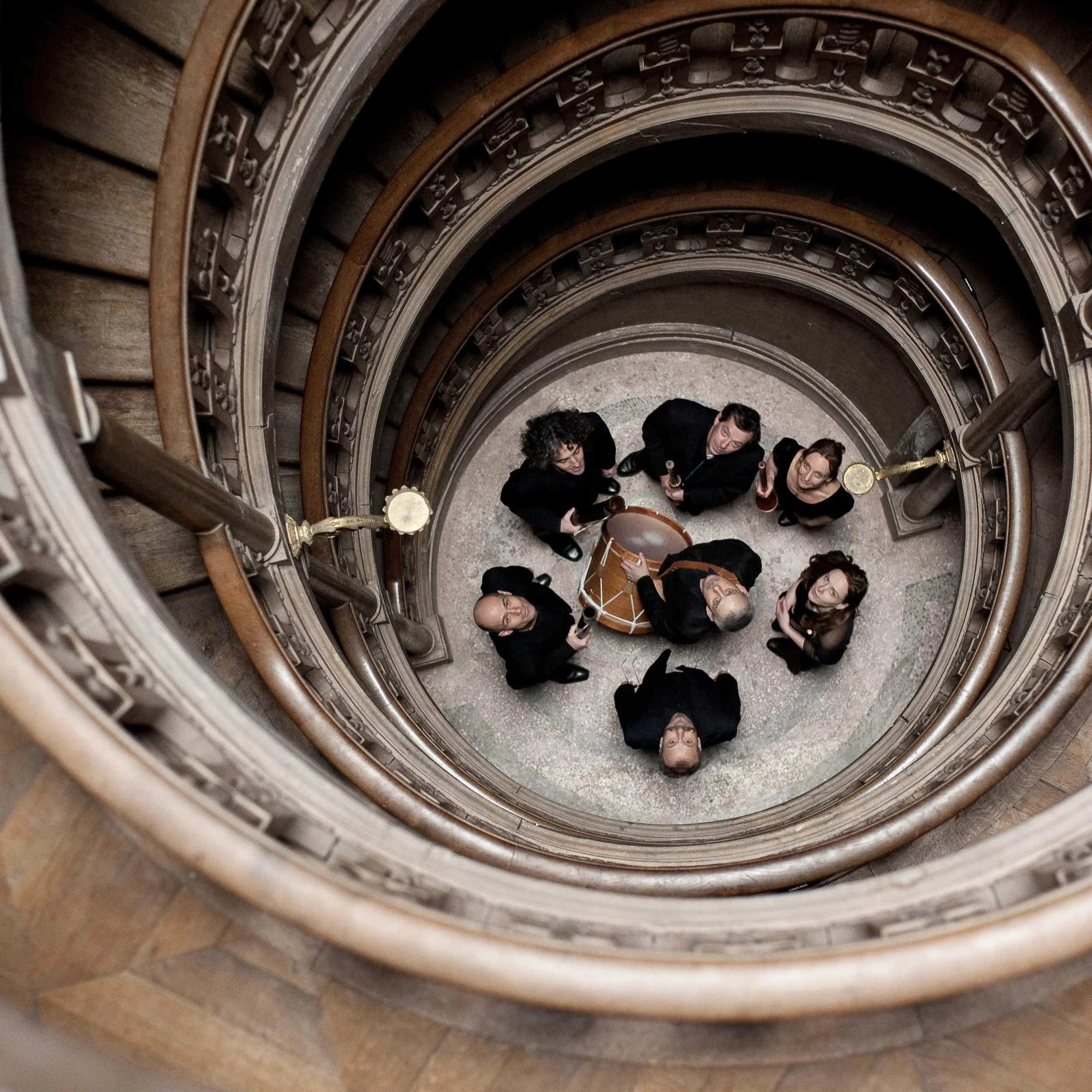Scotiabank Dance Centre celebrates 20 years as a hub and catalyst for Vancouver's scene
Aeriosa, a company that launched with the state-of-the-art building, soars from its walls again
Aeriosa performing outside the Scotiabank Dance Centre for its 10th anniversary. Photo by Louise Cecil
Aeriosa’s new Home/Domicile finds the dancers camouflaged in mothlike cloaks, suspended from the Scotiabank Dance Centre’s north wall. Photo by Julia Taffe
The Scotiabank Dance Centre 20th Anniversary Open House takes place from 1 to 6 pm on October 2.
MIRNA ZAGAR STILL has a vivid memory from 20 years ago, of the first time she saw Ballet BC artists rehearsing in the newly built Scotiabank Dance Centre. The bright, expansive studio was a huge improvement from the dark, low-ceilinged rehearsal hall the troupe had been using on West Broadway.
But it wasn’t just the room that was different.
“I saw a physical transformation of the dancers’ bodies in the space,” the centre’s executive director tells Stir over the phone from her home country, Croatia, on her first sojourn back to Zagreb in two years. “That changes the body—and I’m going to get goosebumps just thinking about it! It’s hard to really sink in, what the art form means. You need space.”
Ballet BC wasn’t the only troupe to see a transformation when the new structure went up at Davie and Granville Streets.
For years, the city’s relatively small community of dance artists had worked in whatever affordable spaces they could find—often sketchy industrial or back-alley spots. Now they could inhabit an $11-million state-of-the-art facility—with such previously unknown luxuries as sprung floors and air conditioning—designed by Architectura and renowned Canadian architect Arthur Erickson.
It took more than 15 years of hard work to get the centre built. Zagar, a longtime force in dance in Croatia and Europe, took the helm of the project in the late ‘90s, just after the city had reneged on a land offer on Pacific Boulevard. Her board was tired and it looked like the dream could die. “I realized the City didn’t believe that this could be a success, and there were doubts on the provincial level that a small organization like the Dance Centre could pull something like this off,” Zagar says. But she managed to rally the team to secure one last extension of infrastructure funding to see what they could make happen. From there, Zagar helped secure provincial and federal funding, land from the city, and Scotiabank support. The rest is history.
It’s fair now, in retrospect, to say that the gleaming structure celebrating its 20th anniversary with an all-day open-house event on Saturday has helped transform the West Coast’s entire dance scene. For its part, Ballet BC is in-demand at some of the most prestigious dance venues in Canada and across Europe and the U.S., while companies from Company 605 to Shay Kuebler’s Radical System Art to Out Innerspace Dance Theatre (which just made a huge splash at Italy’s TorinoDanza) have taken the world by storm.
“We set a standard and said we’re not going to go below that—in a city as expensive as Vancouver, where artists are struggling to find space,” Zagar says. “Dance has become one of the most propulsive and dynamic art forms in the city, with so many diverse artists coming into the art form.
Photo by Ian Hunter
The Jarilowsky Studio in the Scotiabank Dance Centre. Photo by Gerry Kopelow
“It’s become a key cultural hub in Vancouver where not just dance artists meet with each other but also with different art disciplines, where citizens come to participate and learn dance, and where, pre-pandemic, we get 87,000 visitors per year,” Zagar adds. “It’s a beautiful example of how the donation of a corporation like Scotiabank can serve a very huge community.”
Learning to soar
AERIOSA, ONE OF the companies that burst onto the scene because of the centre opening, is back for the 20th anniversary celebrations to perform a new work called Home/Domicile on the facility’s outer wall.
Aeriosa artistic director Julia Taffe says there’s a good chance she wouldn’t have formed the now well-known aerial dance company if not for the building—and an invitation from Zagar two decades ago to animate the outside of it to mark its grand opening.
“That was my very first choreography for a building and my very first time creating a vertical performance with other dancers,” recalls Taffe over the phone with Stir.
Taffe had trained with with the Winnipeg School of Contemporary Dancers, the Royal Winnipeg Ballet, and Toronto Dance Theatre prior to becoming a rock climber and climbing guide.
Julia Taffe
“It brought me back to dance,” Taffe, who had experimented with the emerging aerial form south of the border, says of the Dance Centre opening. “I’m not sure I would have been a choreographer or gone back to dance without that catalyst. The Dance Centre encouraged me to do something I didn’t have any examples of in Canada, and certainly not in an urban environment.”
One morning before rehearsals on the outside walls, news came that two planes had hit the Twin Towers in New York City. The trauma of 9-11 would have a huge impact on the piece, she remembers.
“We didn’t know what was going to happen next,” she recalls. But the troupe persevered with a new purpose. “It had this kind of solemnity and ritual to it that I think people really appreciated in terms of transformation and in terms of 9-11. Because of the kind of work we were doing, it made me understand the power of transformation of space in an urban environment, where humans are allowed to use the spaces that loom over us in the city.
“It was important to create work that would contribute to healing,” she explains, adding that sense of purpose would spur her to form a company and create many more works. “It made me feel like my work was meaningful—it wasn’t spectacle, that it could be potent.”
The Dance Centre would support her for many more years as her company evolved, performing indoors and outdoors at the venue (returning to its walls for the 10th anniversary).
When Aeriosa returns high up the structure’s north wall on October 2, it will take a new conceptual direction. Created by Taffe in collaboration with visual artists Sarah E Fuller and Stuart Ward, Home/Domicile is inspired by Vancouver Island’s endangered Sand Verbena moths—and by camouflage “moth” cloaks designed by Fuller.
“I was interested with the idea of approaching performance from a different perspective,” Taffe says. “For years we’ve worn beautiful bright red costumes to stand out from the skyscrapers and as human beings.”
Now Taffe is playing with ideas of creatures blending in with their environments, and the idea of having to be watchful to see the performers—much like humans observing moths and other creatures in nature.
The show also speaks to the urban environment off Granville Street where it takes place. Taffe has seen vast changes in the area since she took to its walls in 2001—and the effects of opioid use, homelessness, gentrification, and displacement.
“As soon as we go there, the dance changes the energy of the place and the way people use it is different,” she observes, “so I do feel our presence in there is important and brings a better energy to the space.”
Animating the space
That energy will resonate throughout the building on October 2, with 20th anniversary celebrations. Company 605 has curated SPLAY, which finds a range of artists animating the Granville Street frontage of the Scotiabank Dance Centre building. Open dress rehearsals, classes, and performances by the likes of Bharatanatyam exponent Sujit Vaidya, dumb instrument Dance’s Ziyian Kwan, and tap master Danny Nielsen with dance artist Shay Kuebler happen throughout the day. (The full schedule of events is here.)
Company 605’s SPLAY animates the building’s facade. Photo by Lisa Gelley
The sheer range of the offerings reflects the diversity of work, professional and community-based, that happens in the Dance Centre—and continues, with safety protocols in studios, despite the pandemic. The Dance Centre led the way with online programming during lockdowns, and has forged ahead with extra cleaning and other measures to keep one of the hardest-hit art forms alive and moving. With vaccinations spreading and the world slowly reopening, it’s launching a season of live productions for 2021-22.
That shows its resilience—a strength that it had to build from the outset 20 years ago.
“The community at the time was doubting itself; it was very fractured,” Zagar reflects. “We consolidated that and restored visibility, building and creating a new synergy between dance and other arts, and other sectors.
“Looking back, I thought, ‘Wow, we did what we said we would do and more. And we’re debt free and support artists through studios, connecting them across the country and the globe.”



















